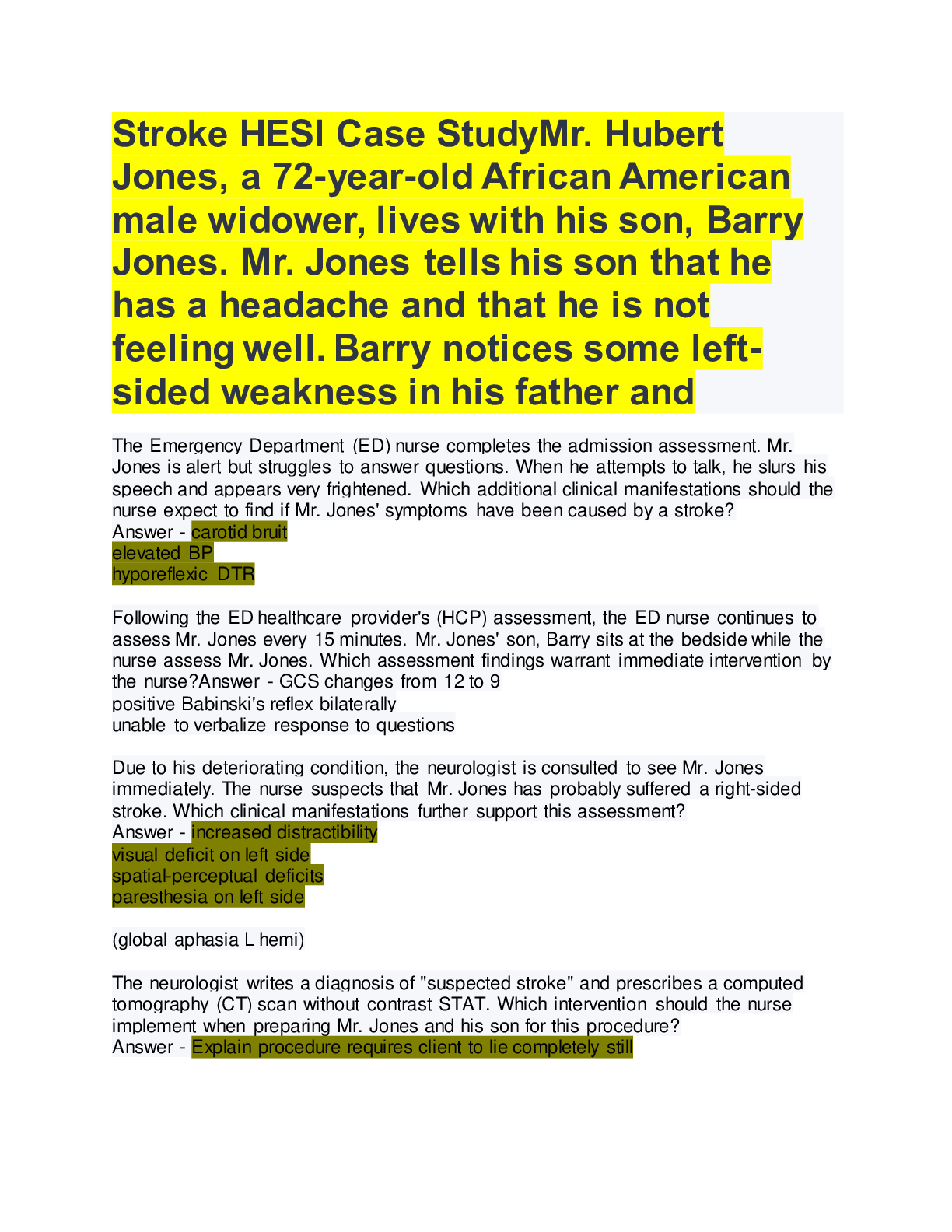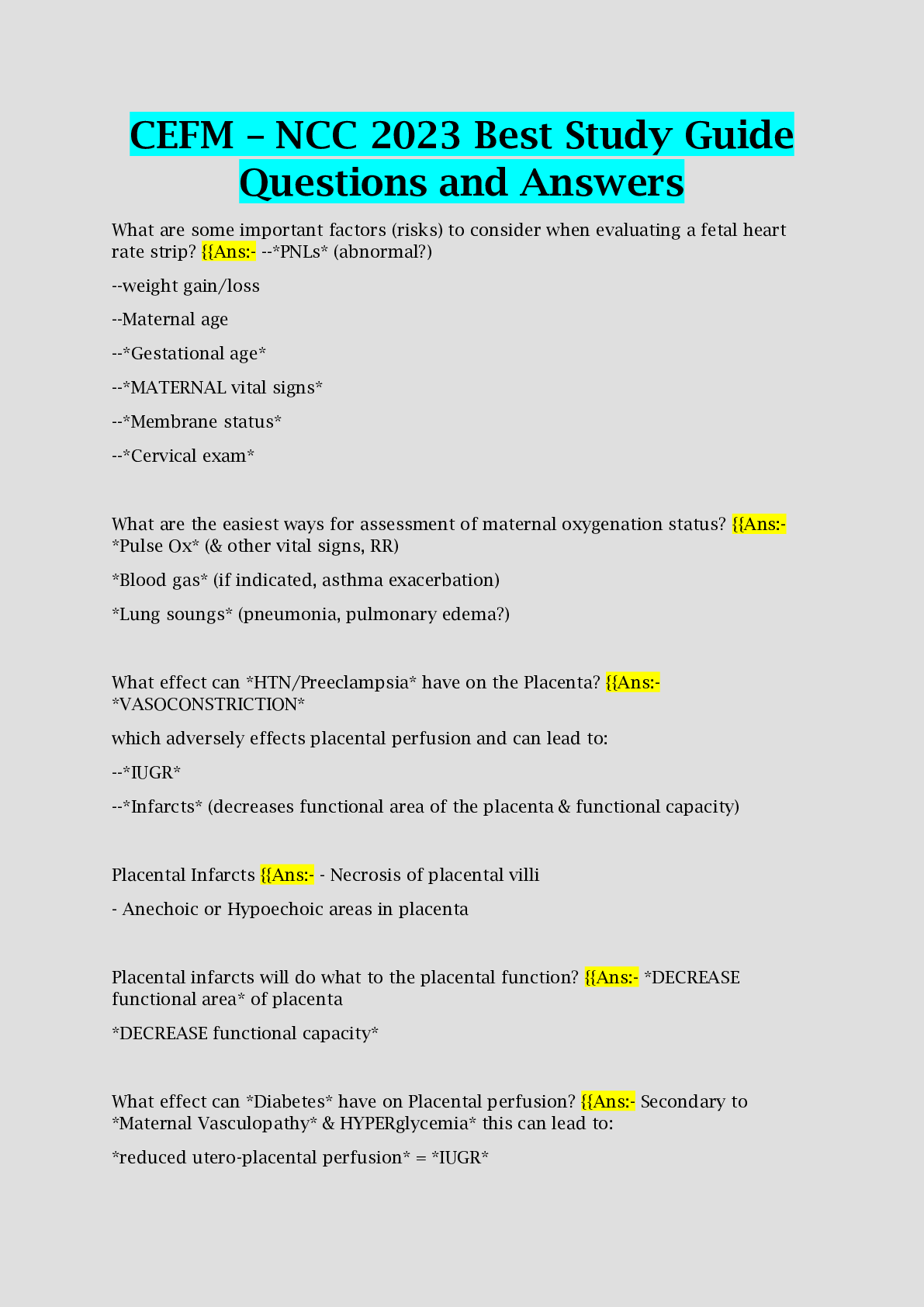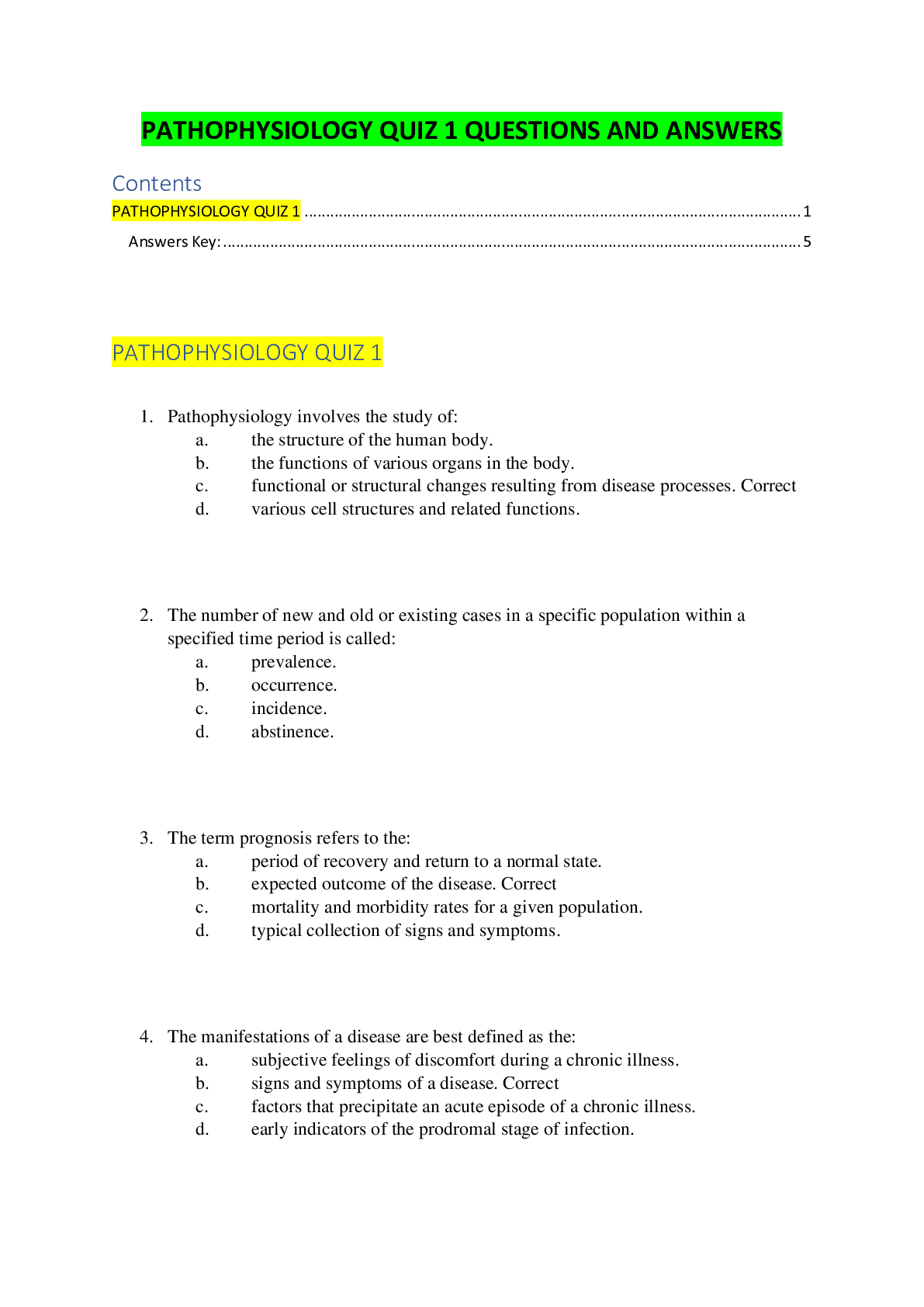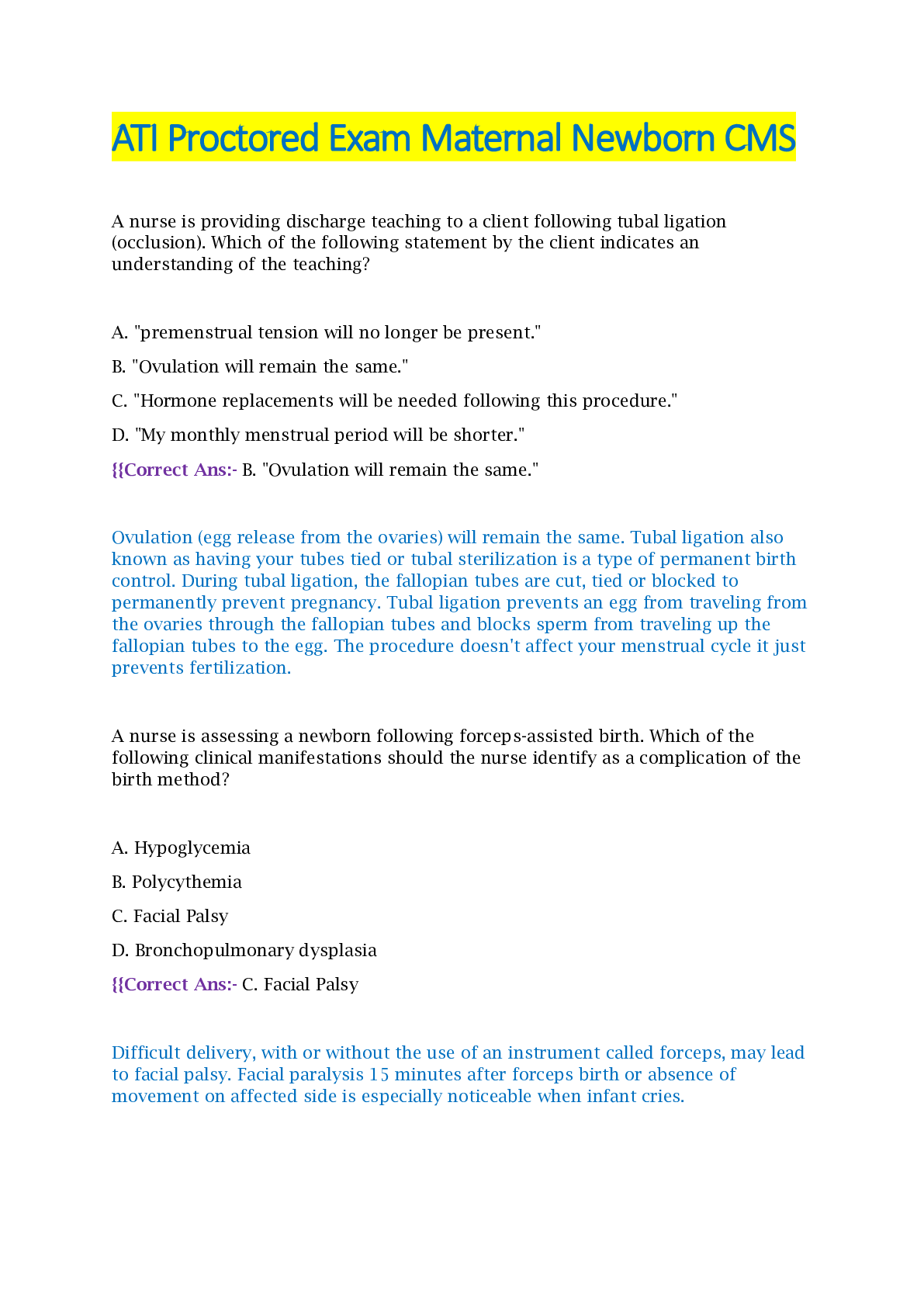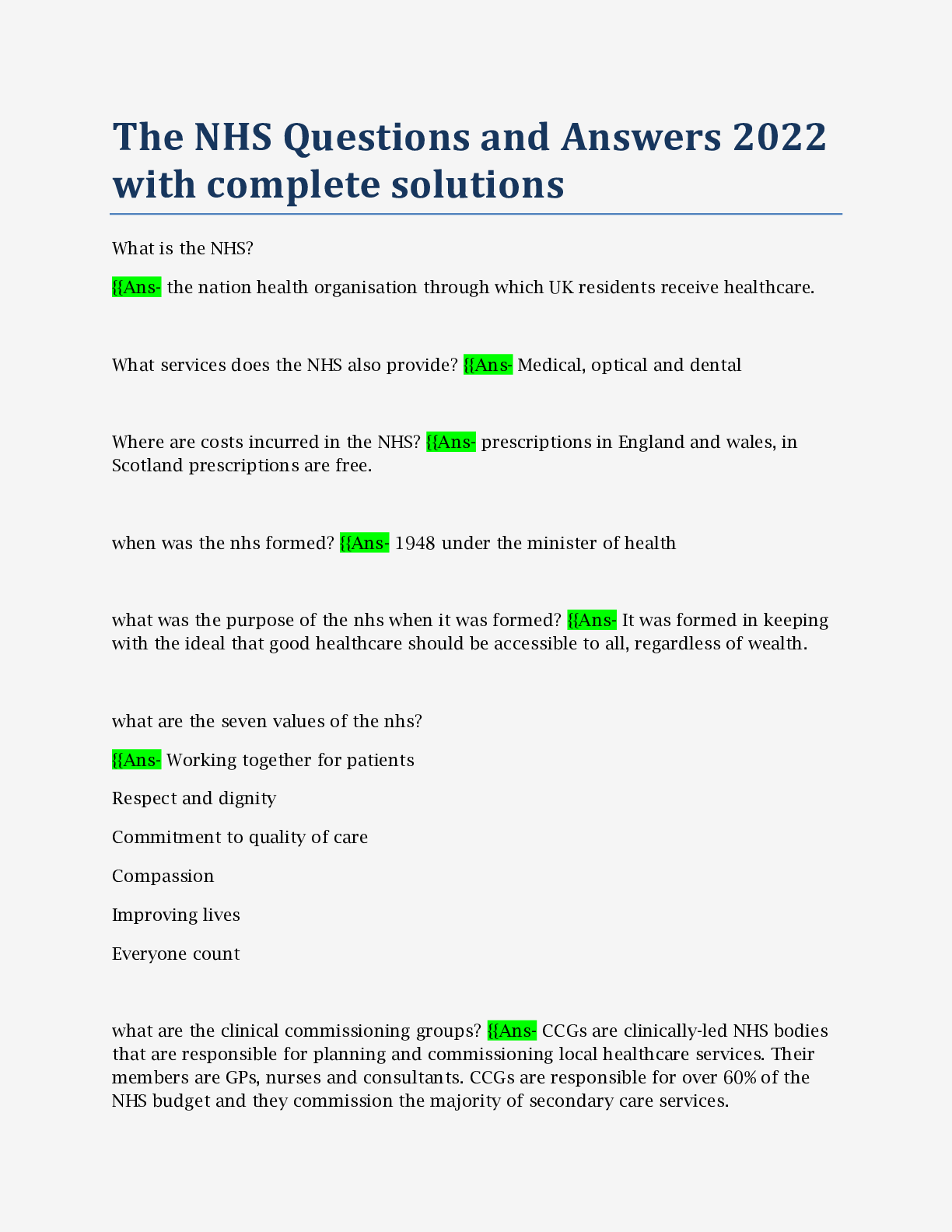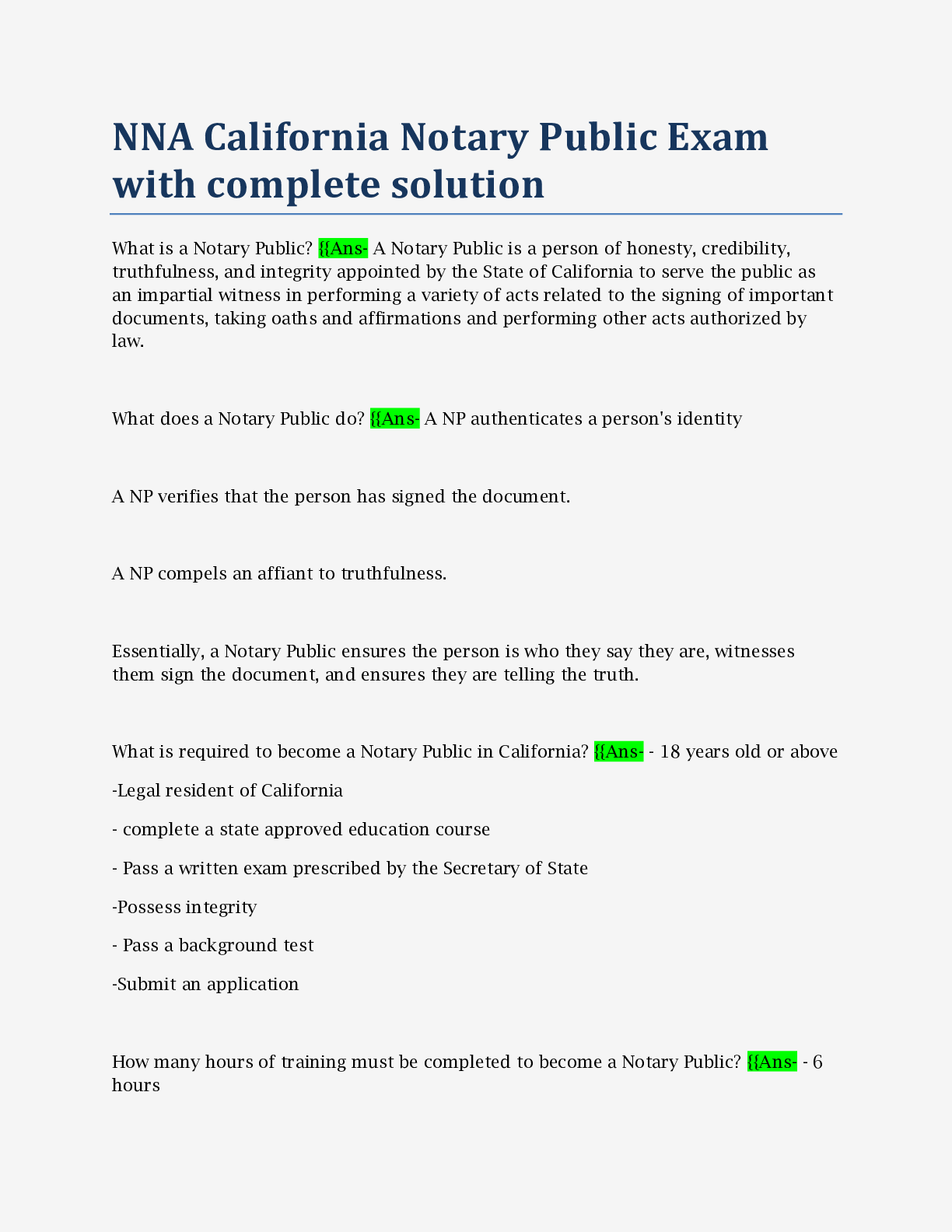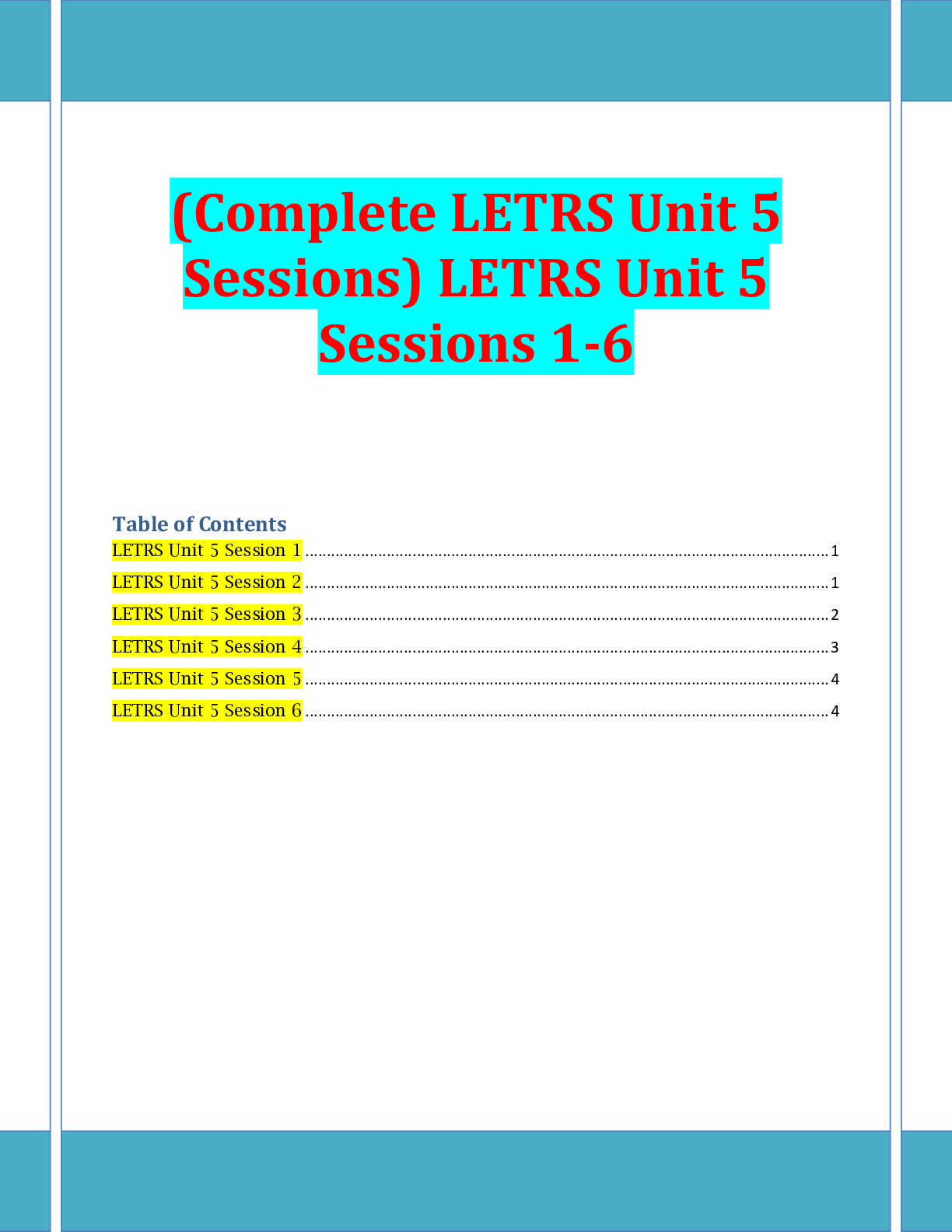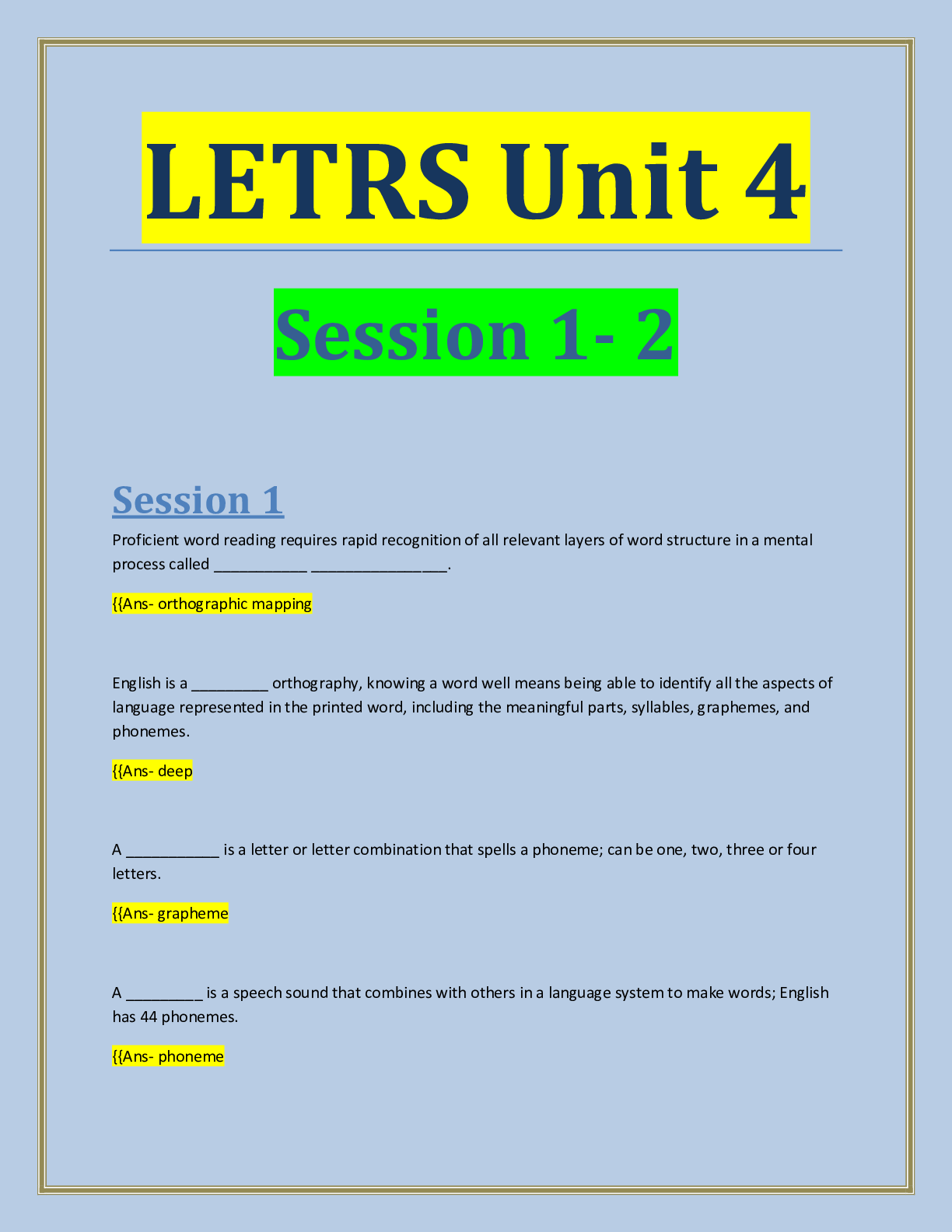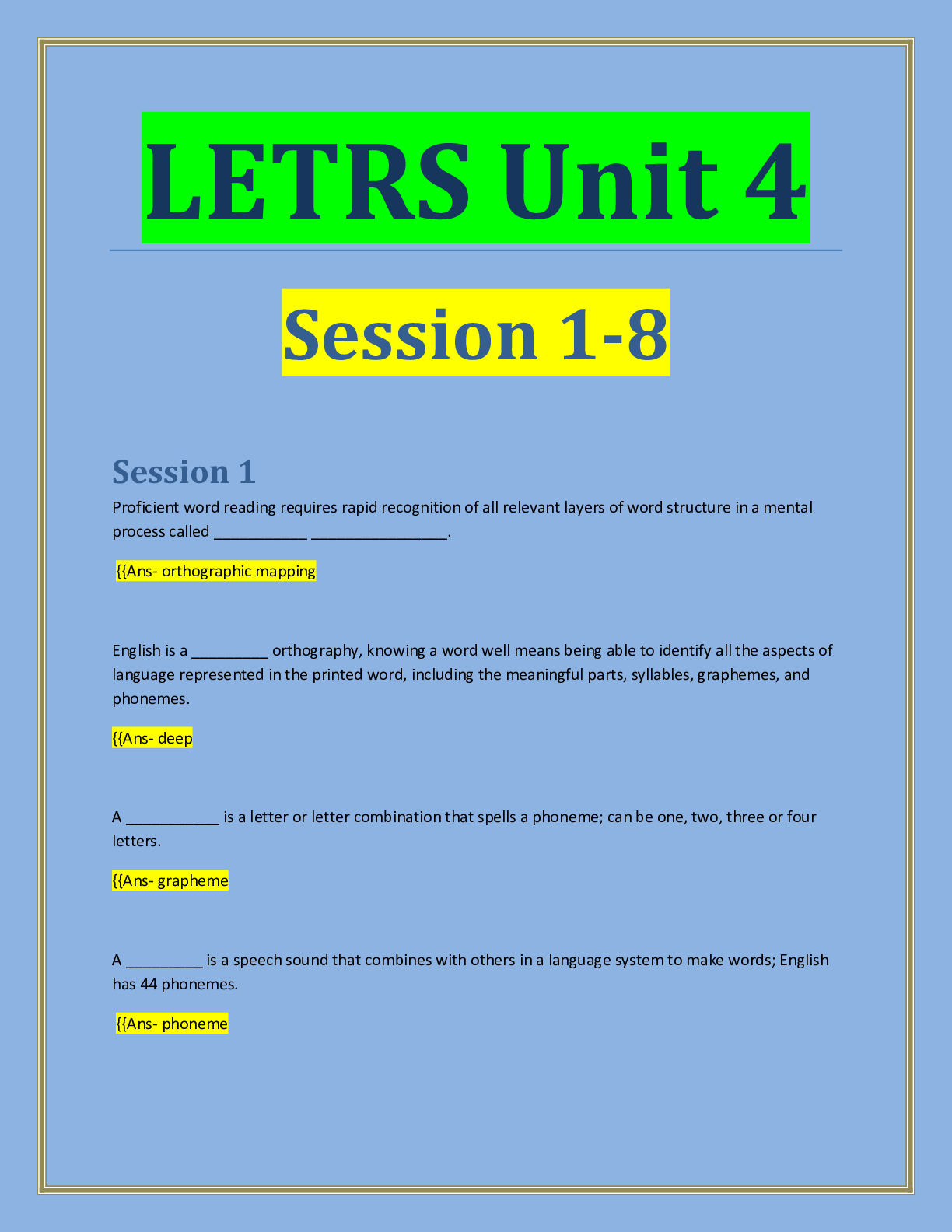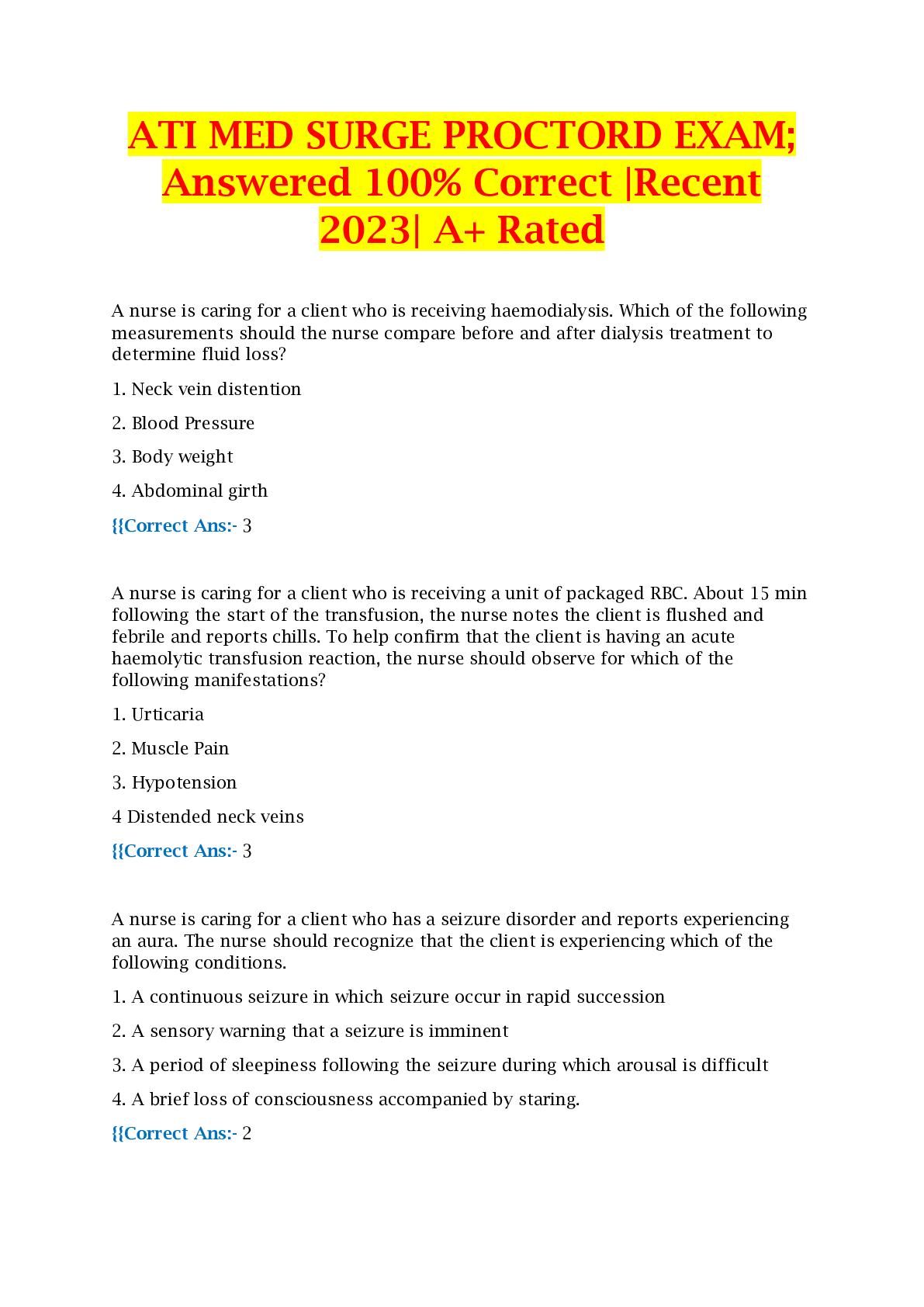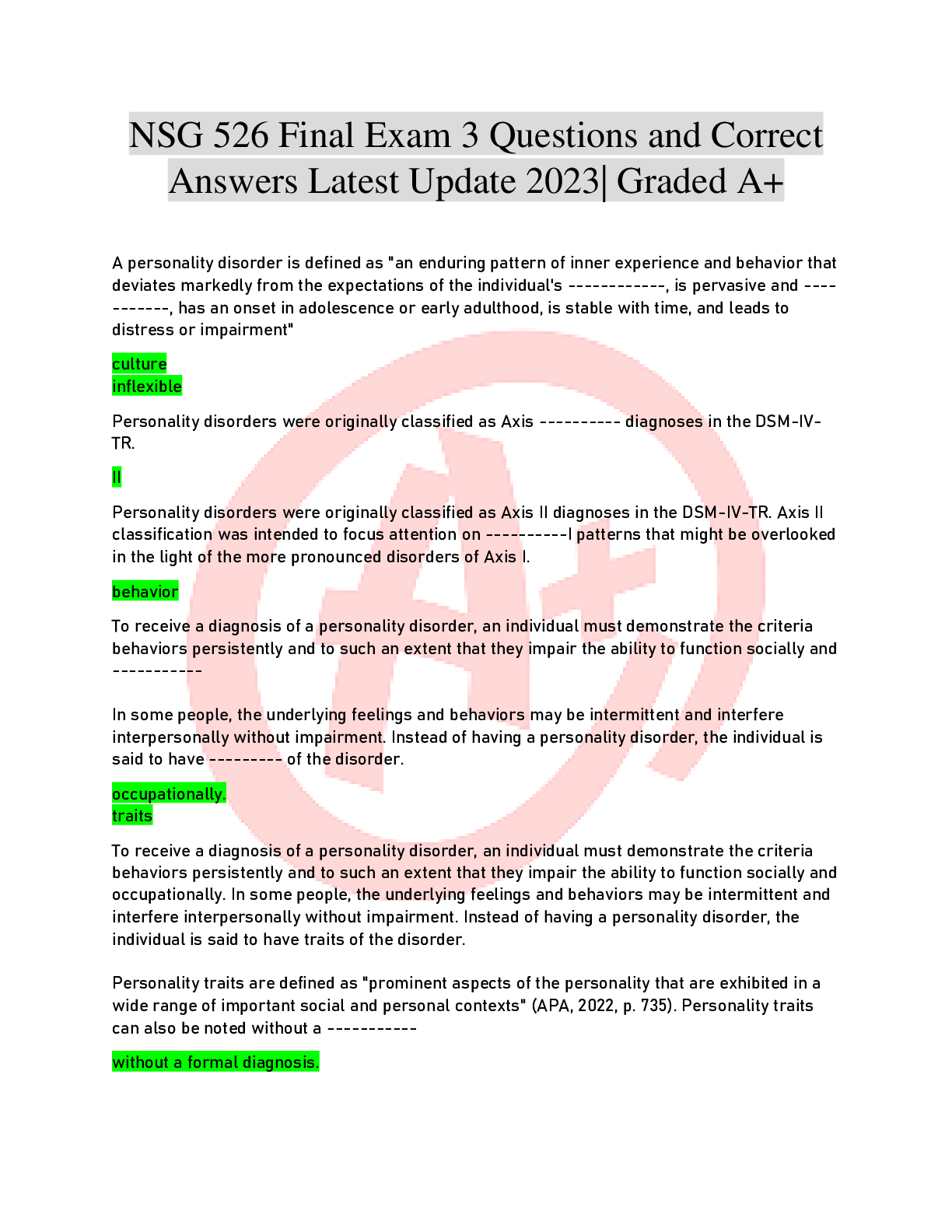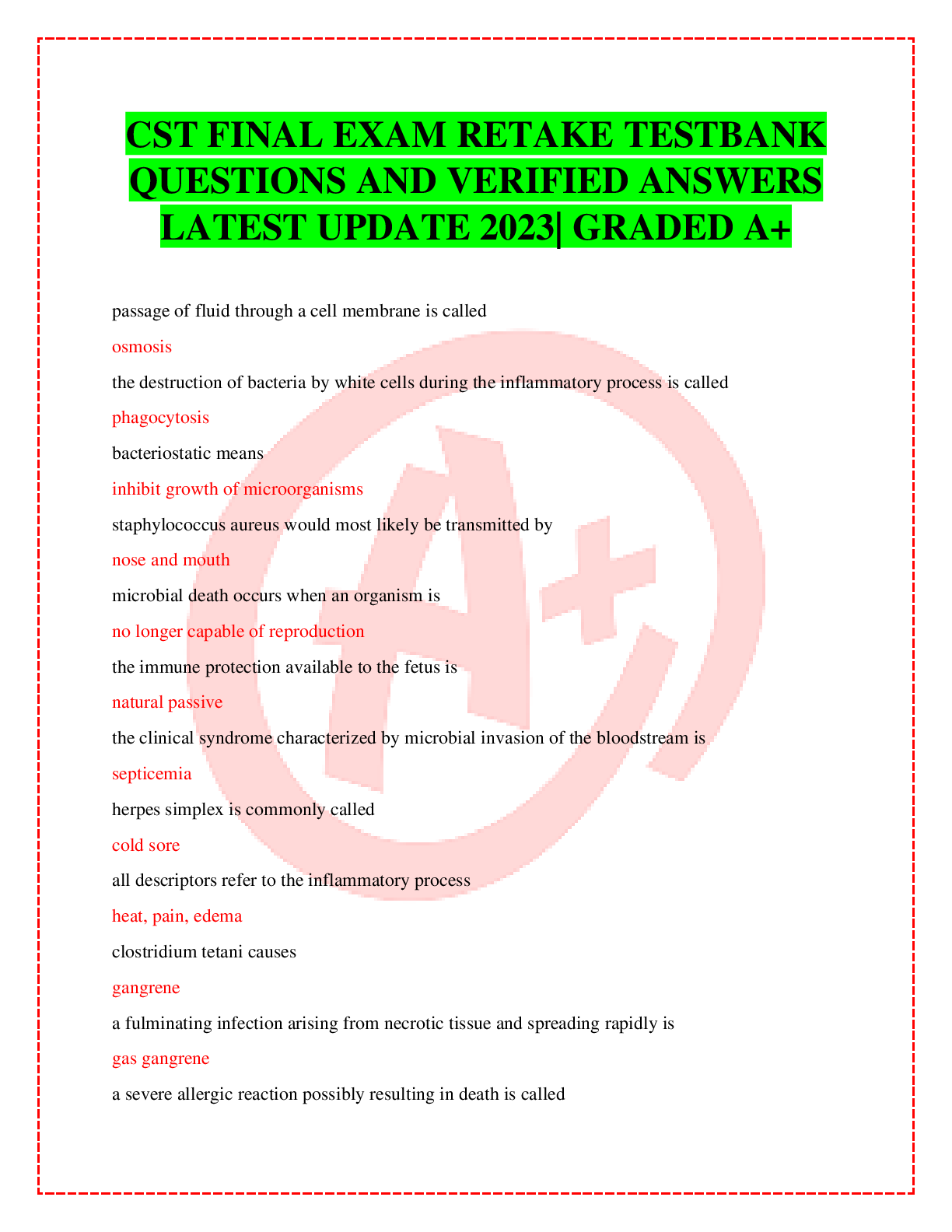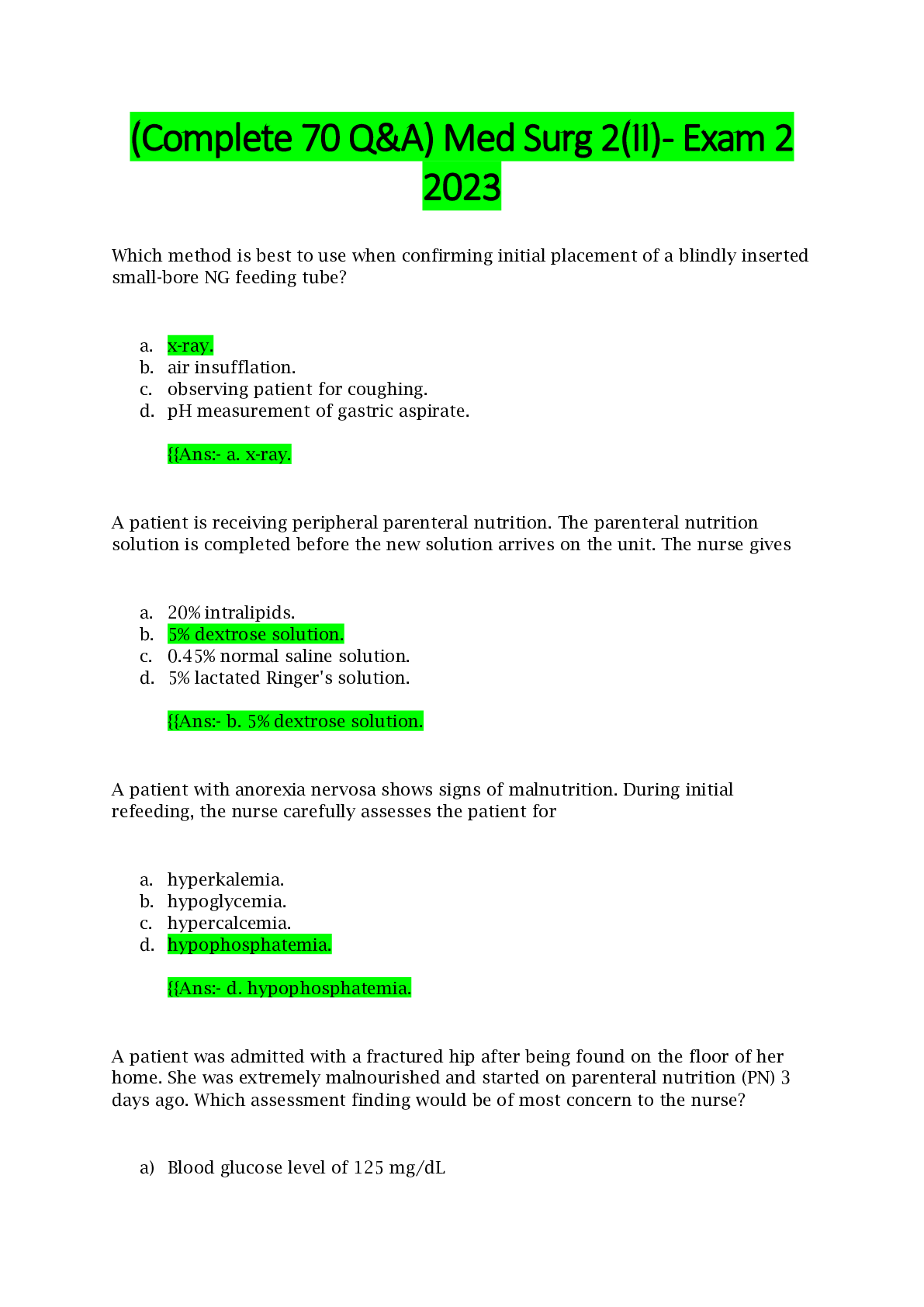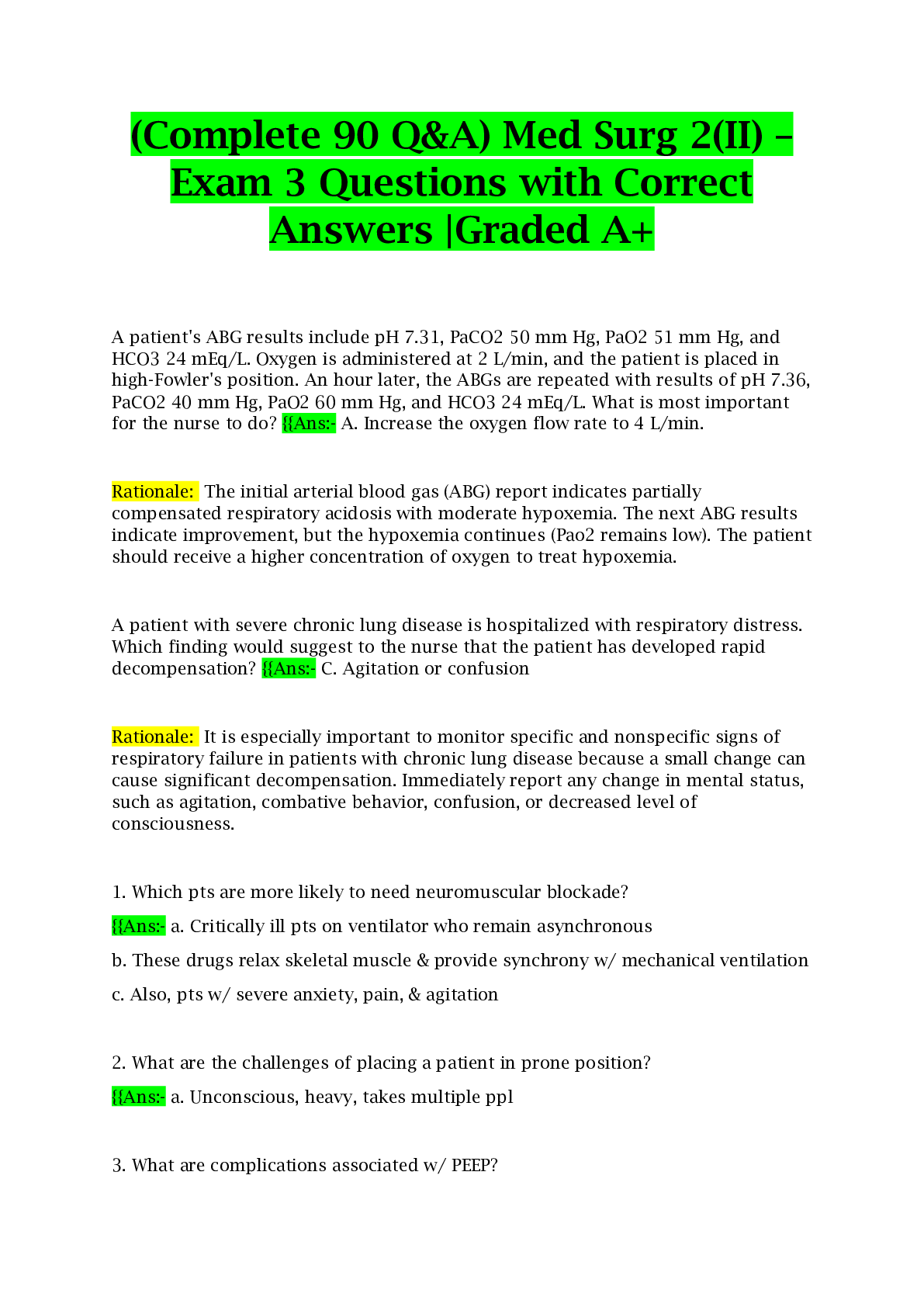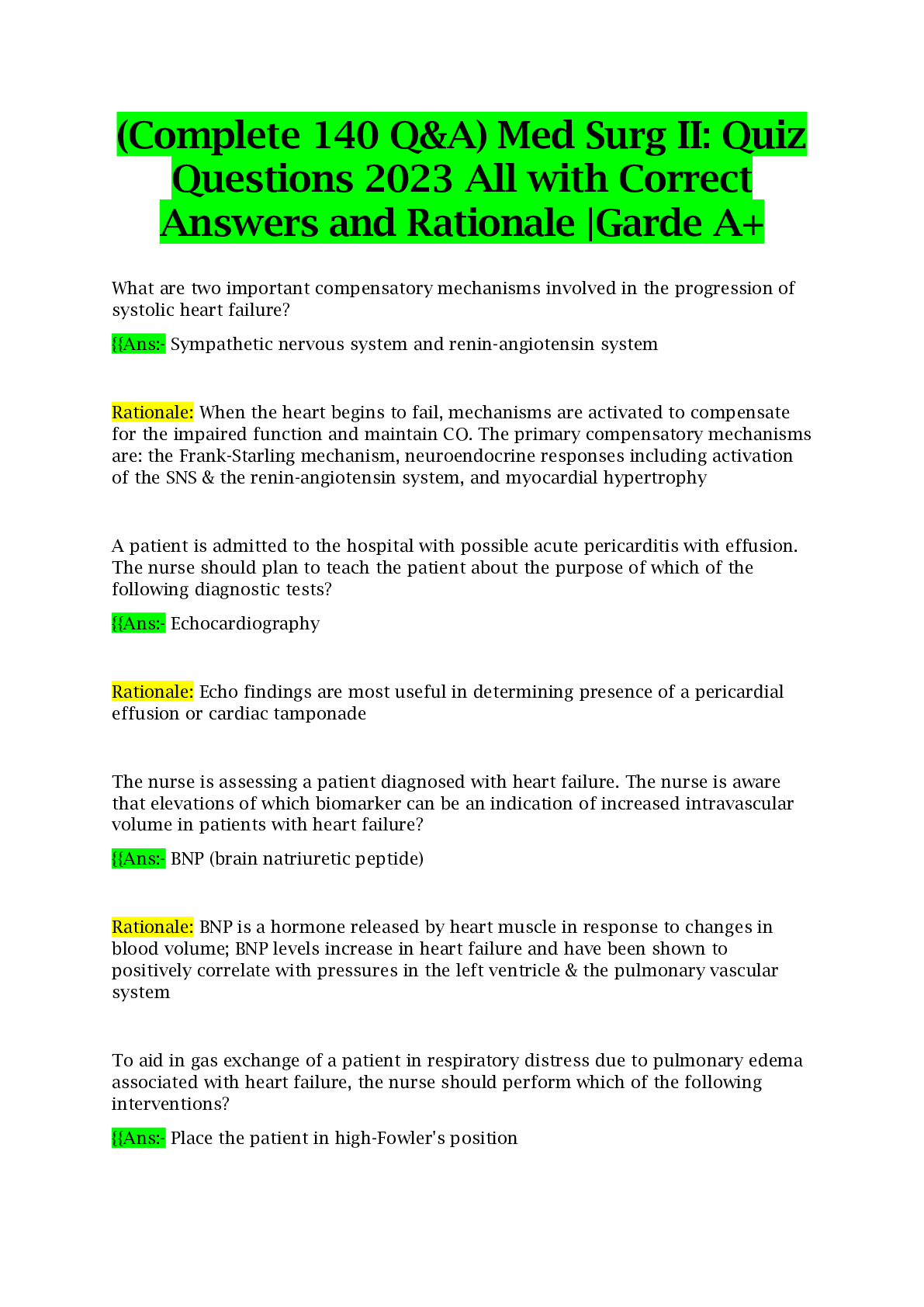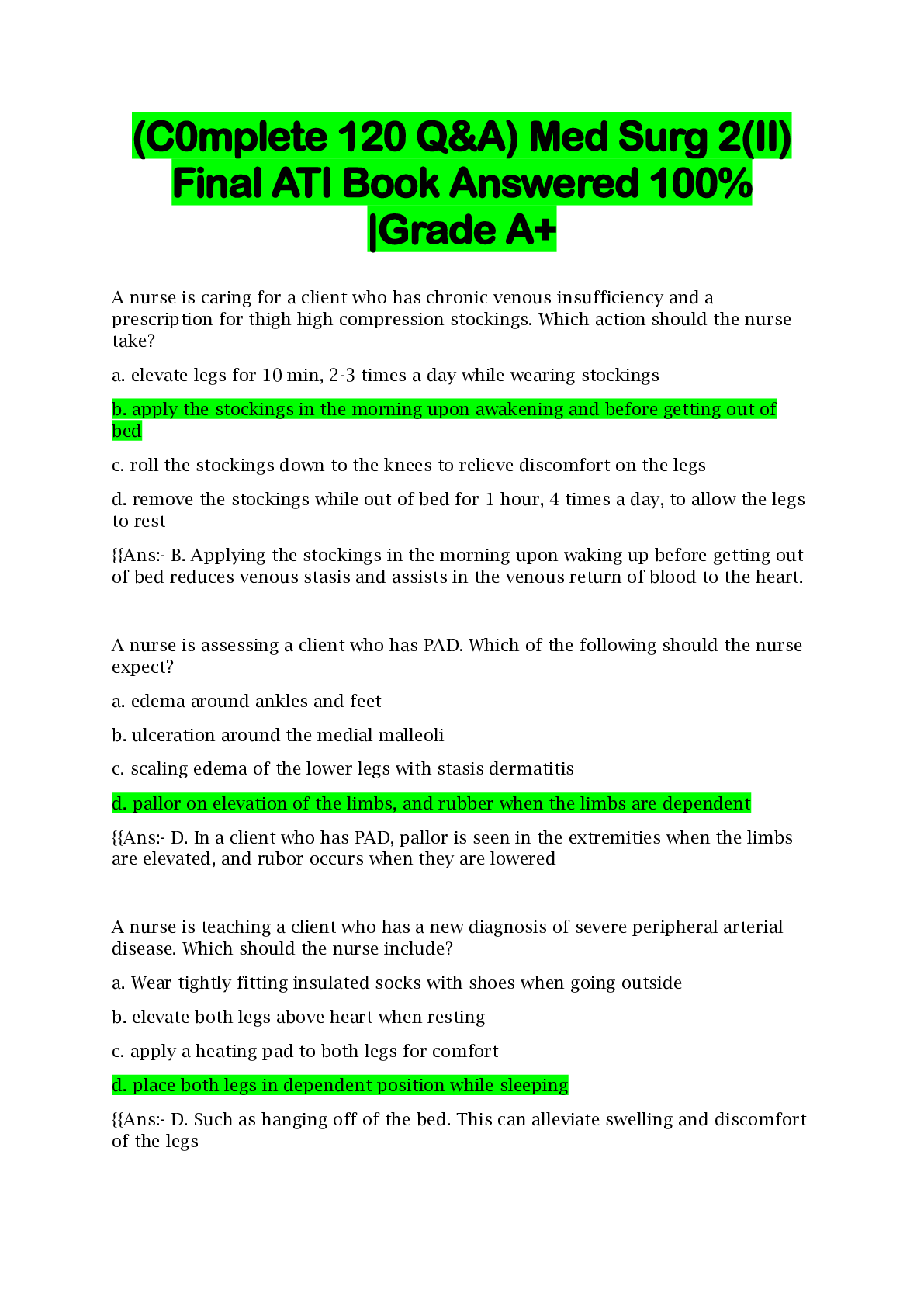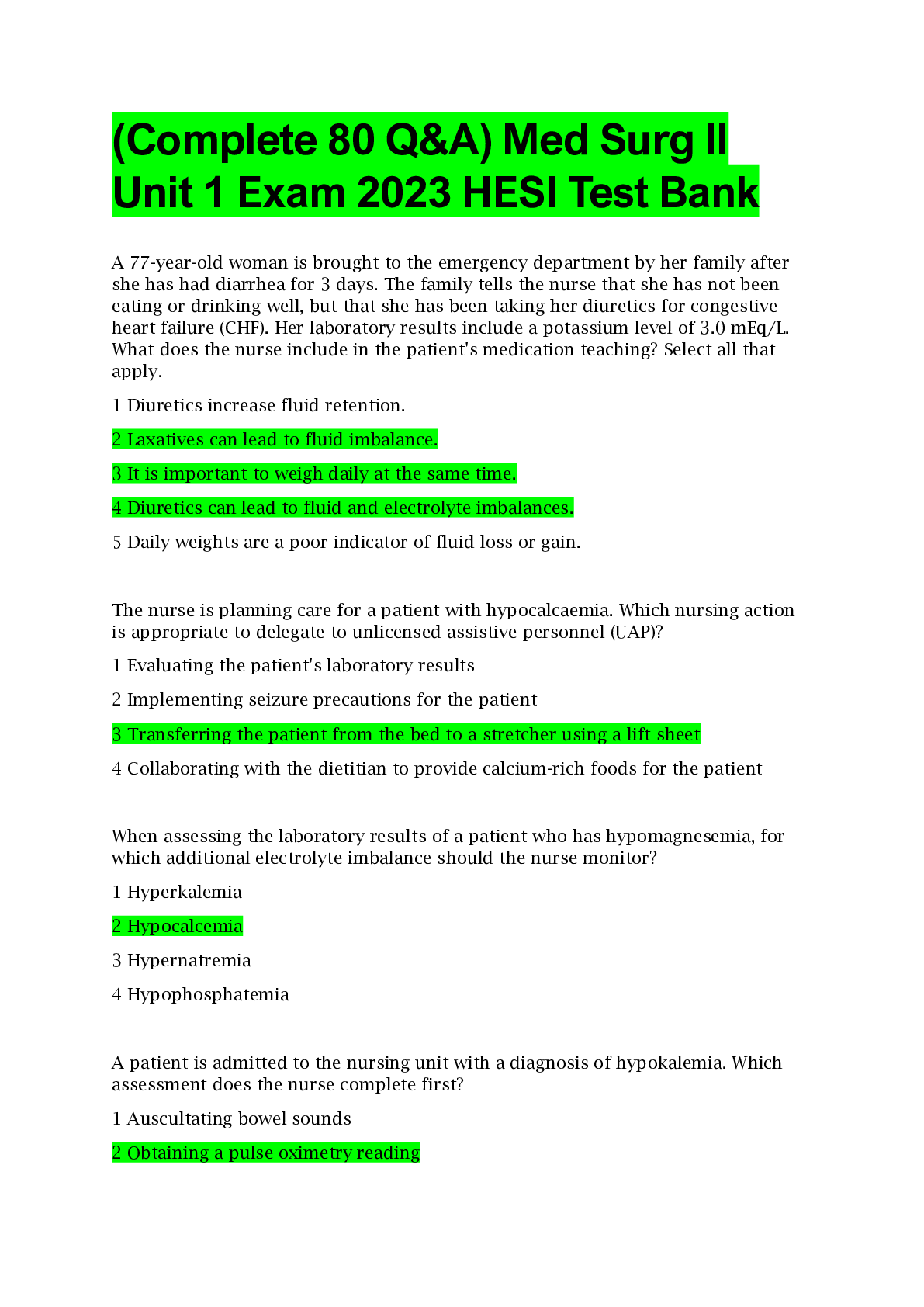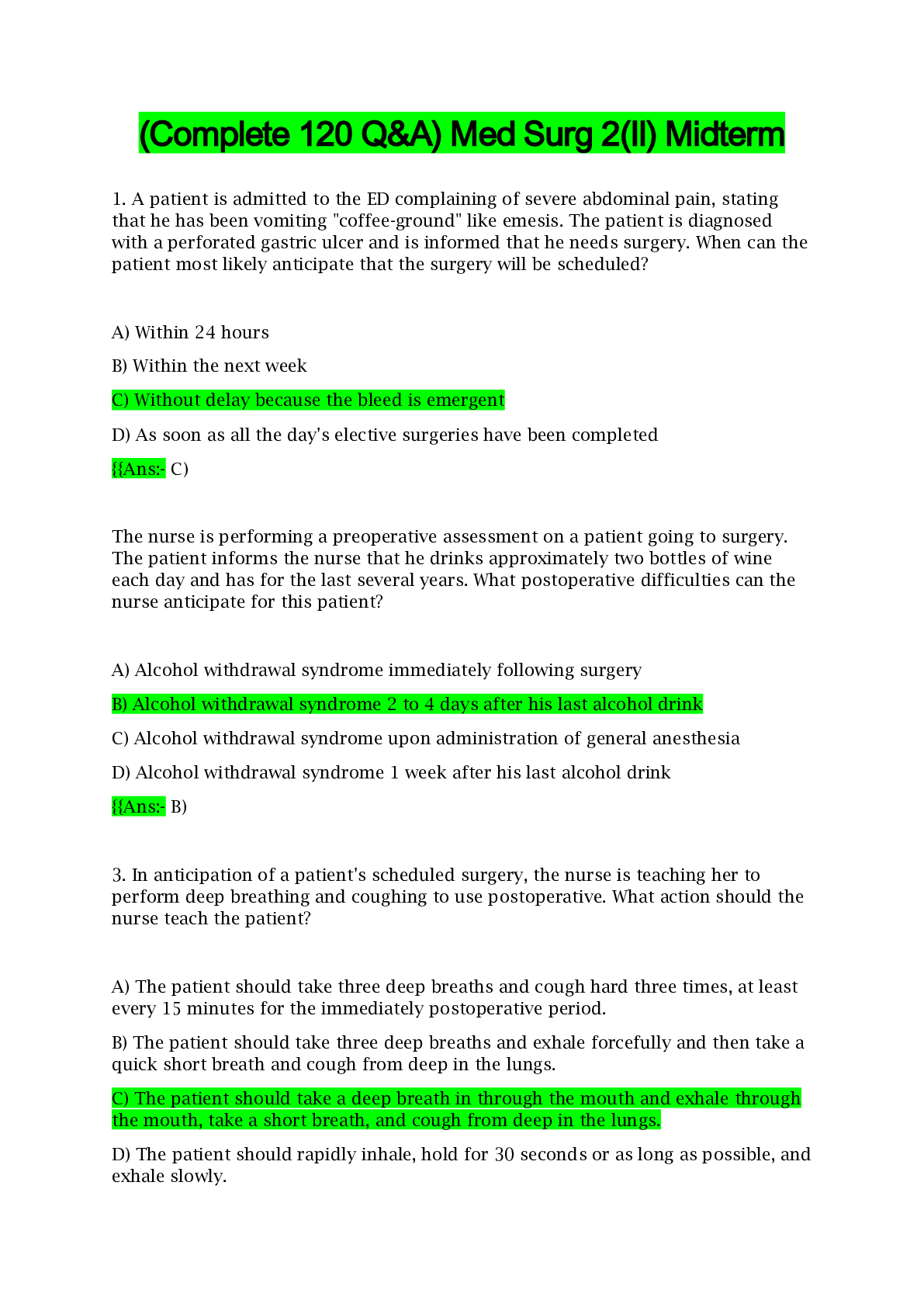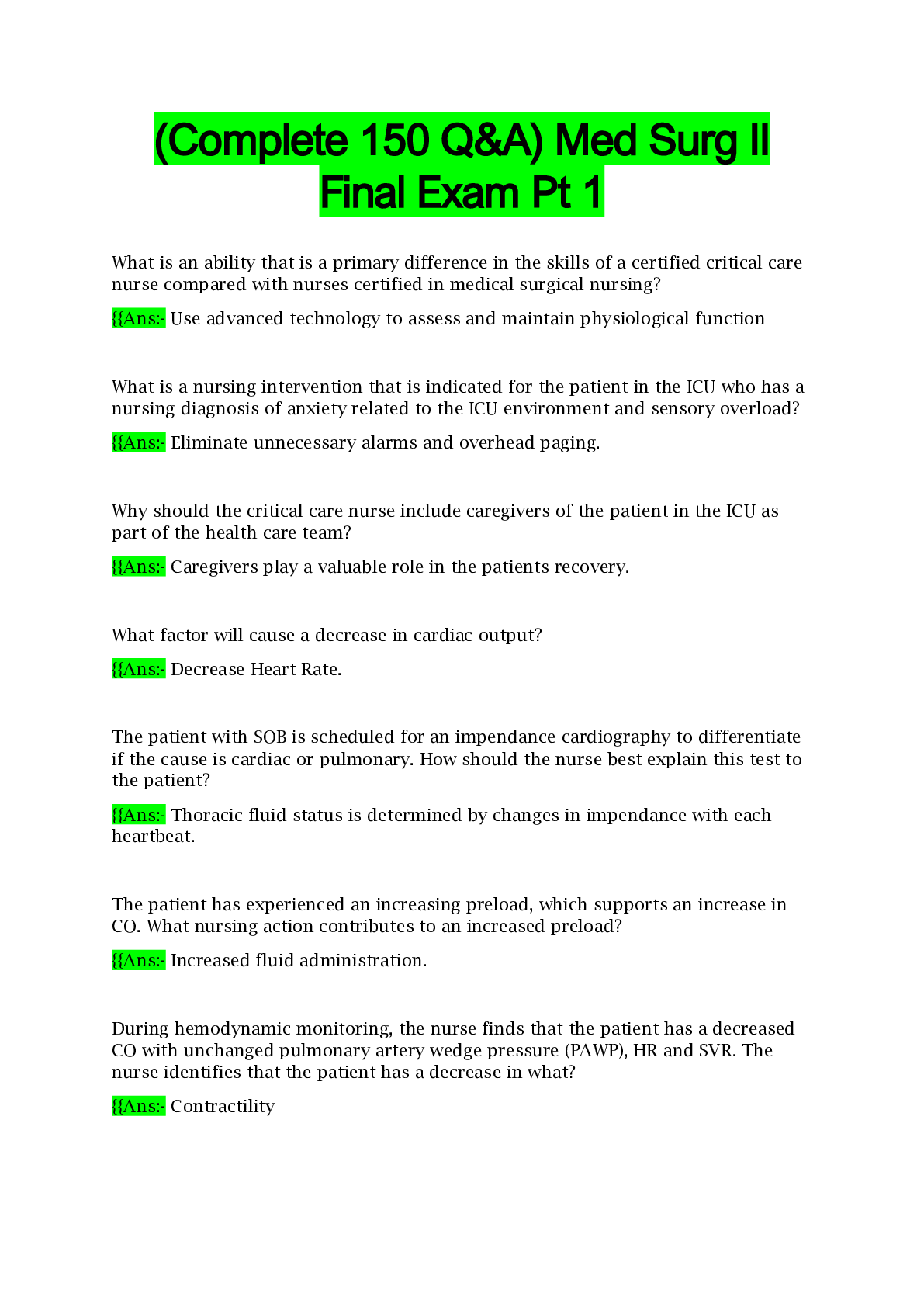Med Surg II > EXAM > (Complete 105 Q&A) Med Surg 2(II)- Exam 1 2023| Graded A+ (All)
(Complete 105 Q&A) Med Surg 2(II)- Exam 1 2023| Graded A+
Document Content and Description Below
(Complete 105 Q&A) Med Surg 2(II)- Exam 1 2023| Graded A+ 1. A patient admitted with ACS has continuous ECG monitoring. An examination of the rhythm strip reveals the following characteristics: atr... ial rate 74 beats/min and regular; ventricular rate 62 beats/min and irregular; P wave normal shape; PR interval lengthens progressively until a P wave is not conducted; QRS normal shape. The priority nursing intervention would be to a. perform synchronized cardioversion. b. administer epinephrine 1 mg IV push. c. observe for symptoms of hypotension or angina. d. apply transcutaneous pacemaker pads on the patient. 2. The nurse is monitoring the ECG of a patient admitted with ACS. Which ECG characteristics would be most suggestive of myocardial ischemia? a. Sinus rhythm with a pathologic Q wave b. Sinus rhythm with an elevated ST segment c. Sinus rhythm with a depressed ST segment d. Sinus rhythm with premature atrial contractions 3. The ECG monitor of a patient in the cardiac care unit after an MI indicates ventricular bigeminy with a rate of 50 beats/min. The nurse would anticipate a. performing defibrillation. b. treating with IV amiodarone. c. inserting a temporary transvenous pacemaker. d. assessing the patient's response to the dysrhythmia. 4. The nurse prepares a patient for synchronized cardioversion knowing that cardioversion differs from defibrillation in that a. defibrillation requires a lower dose of electrical energy. b. cardioversion is indicated to treat atrial brady dysrhythmias. c. defibrillation is synchronized to deliver a shock during the QRS complex. d. patients should be sedated if cardioversion is done on a nonemergency basis. 5. Which patient teaching points should the nurse include when providing discharge instructions to a patient with a new permanent pacemaker and the caregiver (select all that apply)? a. Avoid or limit air travel. b. Take and record a daily pulse rate. c. Obtain and wear a Medic Alert ID device at all times. d. Avoid lifting arm on the side of the pacemaker above shoulder. e. Avoid microwave ovens because they interfere with pacemaker function. 6. Important teaching for the patient scheduled for a radiofrequency catheter ablation procedure includes explaining that a. ventricular bradycardia may be induced and treated during the procedure. b. a catheter will be placed in both femoral arteries to allow double-catheter use. c. the procedure will destroy areas of the conduction system that are causing rapid heart rhythms. d. a general anesthetic will be given to prevent the awareness of any "sudden cardiac death" experiences. 5. When teaching a patient about the long-term consequences of rheumatic fever, the nurse should discuss the possibility of a. valvular heart disease. b. pulmonary hypertension. c. superior vena cava syndrome. d. hypertrophy of the right ventricle. [Show More]
Last updated: 2 years ago
Preview 1 out of 34 pages
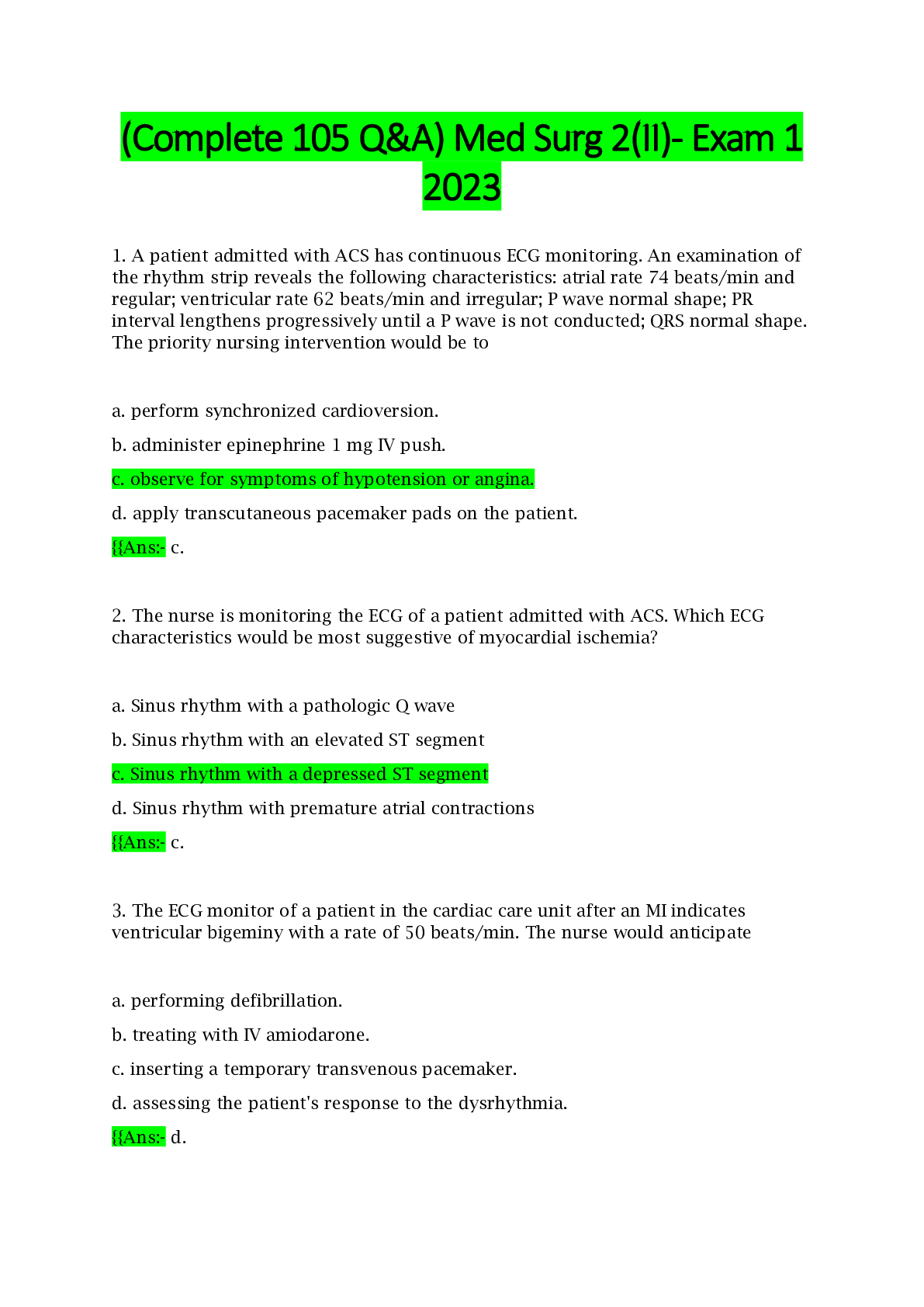
Buy this document to get the full access instantly
Instant Download Access after purchase
Buy NowInstant download
We Accept:

Reviews( 0 )
$8.00
Can't find what you want? Try our AI powered Search
Document information
Connected school, study & course
About the document
Uploaded On
May 26, 2023
Number of pages
34
Written in
Additional information
This document has been written for:
Uploaded
May 26, 2023
Downloads
0
Views
71

